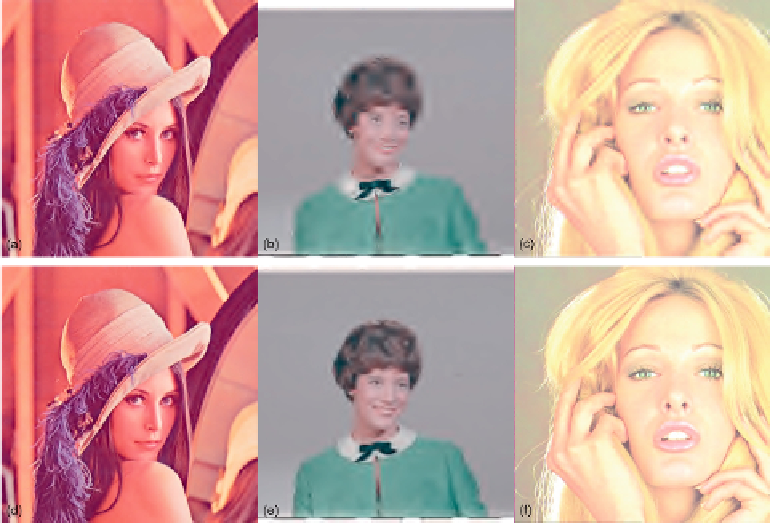Image Processing Reference
In-Depth Information
FIGURE 6
Example of recovered color images
Lenna
,
Girl2
, and
Tiffany
of the CMU image
database compressed at (a and d) 0.92 bpp, (b and e) 0.54 bpp, and (c and f) 0.93 bpp, re-
spectively. JPEG2000 Images are compressed using
Table 1
and
s
= 3. (a) JPEG2000,
MSSIM = 0.9595; (b) JPEG2000, MSSIM = 0.9742; (c) JPEG2000, MSSIM = 0.9274; (d)
XSET, MSSIM = 0.9829; (e) XSET, MSSIM = 0.9948; and (f) XSET, MSSIM = 0.9798.
5 Conclusions
The main goal of this chapter is to introduce perceptual criteria on the image compression pro-
cess. These perceptual criteria are used to identify and to remove non-perceptual information
of an image. These aspects are used to propose a perceptual image compression system. Ad-
ditionally, the coder based on Hilbert scanning (H
i
-SET) is also presented.
The H
i
-SET coder, presented in
Section 3
, is based on Hilbert scanning of embedded
quadTrees. It has low computational complexity and some important properties of modern
image coders such as embedding and progressive transmission. This is achieved by using
the principle of partial sorting by magnitude when a sequence of thresholds decreases. The
desired compression rate can be controlled just by chunking the stream at the desired ile
length. When compared to other algorithms that use Hilbert scanning for pixel ordering, H
i
-
SET improves image quality by around 6.20 dB. H
i
-SET achieves higher compression rates
than JPEG2000 coder not only for high and medium resolution images but also for low resol-
ution ones where it is difficult to find redundancies among spatial frequencies.
Table 2
sum-

Search WWH ::

Custom Search